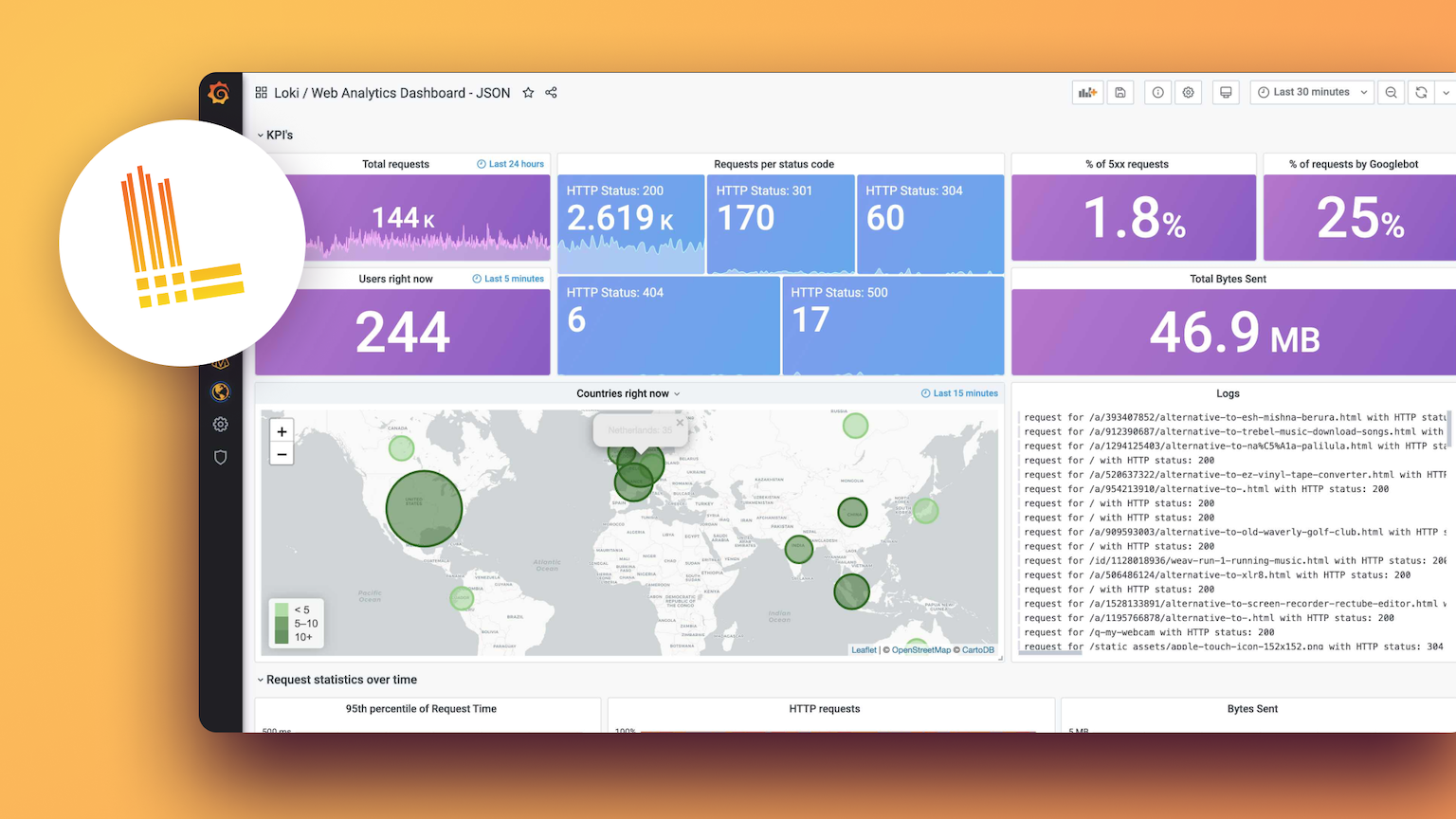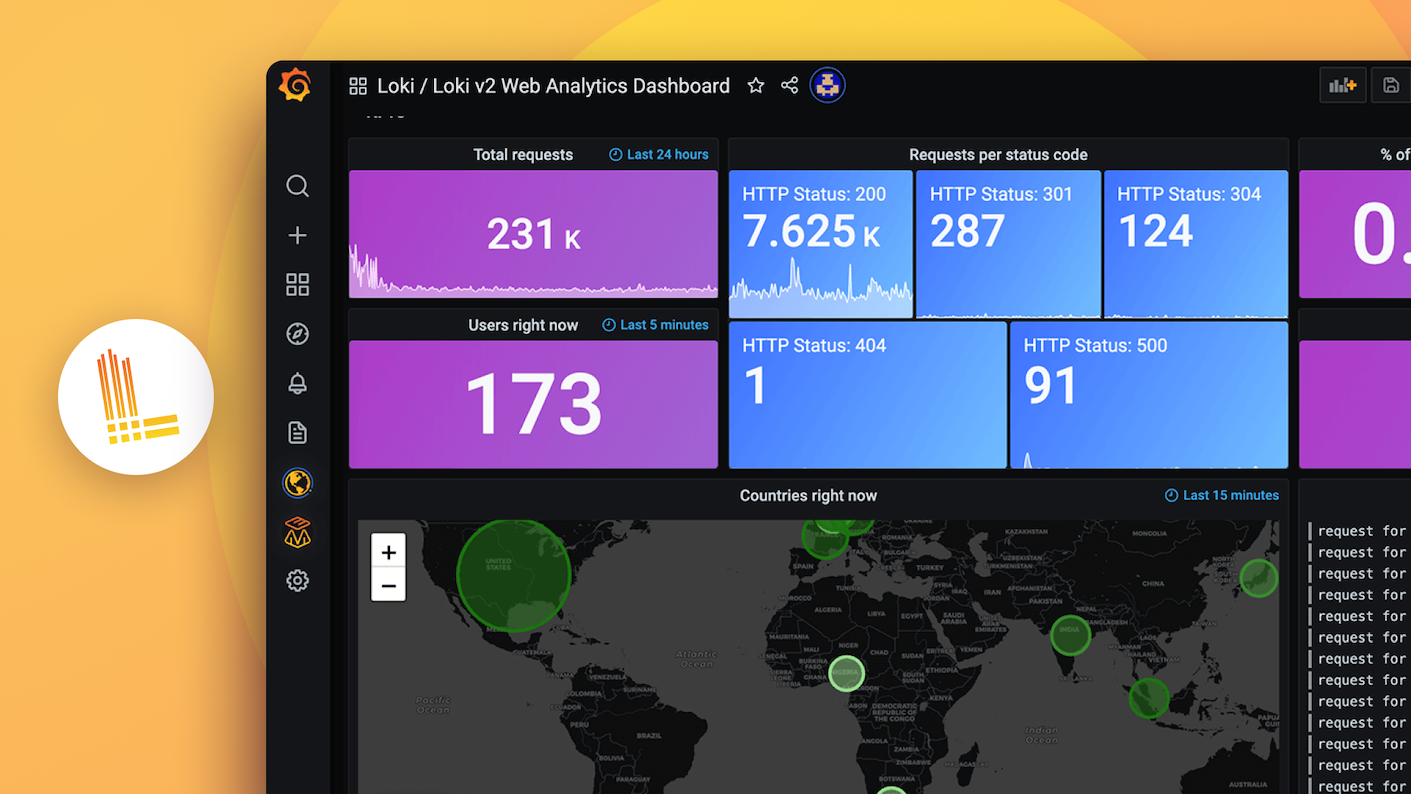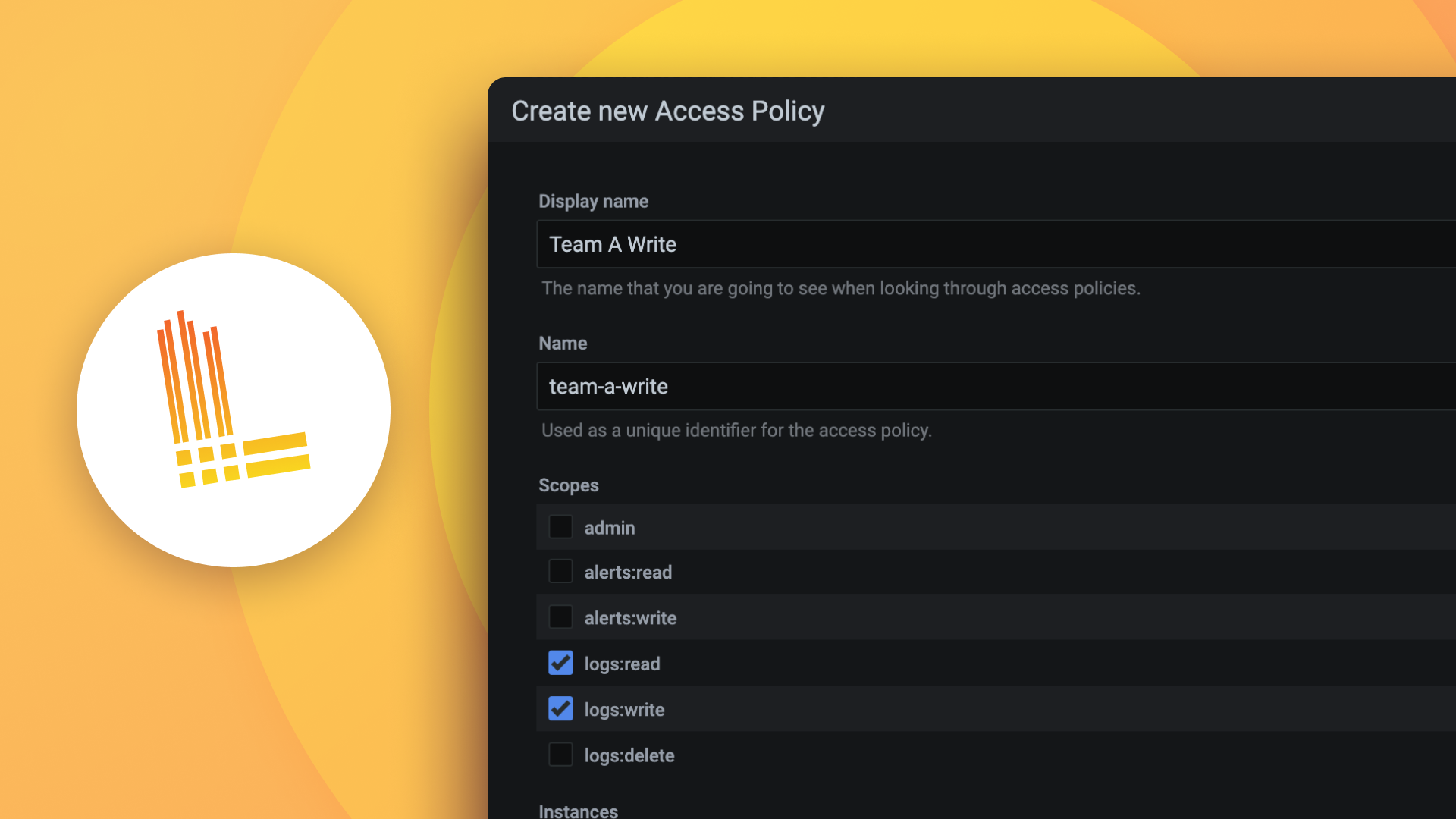查询前端示例
免责声明
这是一个通用示例;要使其正常工作,需要进行一些替换。这些变量采用 <variable_name> 的形式。您应该根据您的环境具体情况进行覆盖。
用例
刚开始尝试 Grafana Loki 时,为了简化部署并推迟学习(起初非必要的)细节,通常会将其作为单个二进制文件运行。随着我们对其范例越来越熟悉并开始迁移到更适合生产环境的部署,有一些事项需要注意。常见的瓶颈出现在读路径:在小数据集上轻松执行的查询可能会在较大数据集上停滞不前。有时我们可以通过增加查询器来解决这个问题。但是,当查询对于单个查询器来说太大而无法执行时,这并无帮助。这时我们就需要查询前端。
并行化
查询前端最重要的功能之一是能够将大型查询分解为更小的查询,并行执行它们,然后将结果重新组合起来。分解的频率由 `querier.split-queries-by-interval` 标志或 yaml 配置 `query_range.split_queriers_by_interval` 决定。如果将其设置为 `1h`,前端会将一个持续一天的查询分解为 24 个每小时的查询,将其分发给查询器,并收集结果。这在生产环境中非常有帮助,因为它不仅允许我们通过聚合执行大型查询,还能使查询器之间的工作分配更加均匀,避免一两个查询器因处理过大的查询而卡住,而其他查询器却处于空闲状态。
Kubernetes 部署
ConfigMap
使用此 ConfigMap 可利用 query-frontend 组件实现查询并行化和缓存的优势。
apiVersion: v1
kind: ConfigMap
metadata:
name: loki-frontend
namespace: <namespace>
data:
config.yaml: |
# Disable the requirement that every request to Loki has a
# X-Scope-OrgID header. `fake` will be substituted in instead.
auth_enabled: false
# We don't want the usual /api/prom prefix.
http_prefix:
server:
http_listen_port: 3100
query_range:
# make queries more cache-able by aligning them with their step intervals
align_queries_with_step: true
max_retries: 5
cache_results: true
results_cache:
cache:
# We're going to use the embedded cache
embedded_cache:
enabled: true
max_size_mb: 100
ttl: 24h
limits_config:
max_cache_freshness_per_query: '10m'
# parallelize queries in 15min intervals
split_queries_by_interval: 15m
frontend:
log_queries_longer_than: 5s
downstream_url: http://querier.<namespace>.svc.cluster.local:3100
compress_responses: true前端服务
apiVersion: v1
kind: Service
metadata:
annotations:
labels:
name: query-frontend
name: query-frontend
namespace: <namespace>
spec:
ports:
- name: query-frontend-http
port: 3100
protocol: TCP
targetPort: 3100
selector:
name: query-frontend
sessionAffinity: None
type: ClusterIP
ClusterIP: None
publishNotReadyAddresses: true前端部署
apiVersion: extensions/v1beta1
kind: Deployment
metadata:
labels:
name: query-frontend
name: query-frontend
namespace: <namespace>
spec:
minReadySeconds: 10
replicas: 2
selector:
matchLabels:
name: query-frontend
template:
metadata:
labels:
name: query-frontend
spec:
containers:
- args:
- -config.file=/etc/loki/config.yaml
- -log.level=debug
- -target=query-frontend
image: grafana/loki:latest
imagePullPolicy: Always
name: query-frontend
ports:
- containerPort: 3100
name: http
protocol: TCP
resources:
limits:
memory: 1200Mi
requests:
cpu: '2'
memory: 600Mi
volumeMounts:
- mountPath: /etc/loki
name: loki-frontend
restartPolicy: Always
terminationGracePeriodSeconds: 30
volumes:
- configMap:
defaultMode: 420
name: loki-frontend
name: loki-frontendGrafana
部署这些组件后,将您的 Grafana 数据源指向新的前端服务。该服务在集群内可通过 http://query-frontend.<namespace>.svc.cluster.local:3100 访问。
GRPC 模式(拉取模型)
查询前端有两种工作模式
指定
--frontend.downstream-url或其等效的 YAML 配置frontend.downstream_url。这将通过 HTTP 将请求代理到指定的 URL。如果没有
--frontend.downstream-url或其等效的 YAML 配置frontend.downstream_url,查询前端默认为拉取服务。作为拉取服务,前端会为每个租户实例化一个队列,下游查询器通过 GRPC 从这些队列中拉取查询。要作为拉取服务运行,查询器需要指定-querier.frontend-address或其等效的 YAML 配置frontend_worker.frontend_address。将查询前端拉取服务的
ClusterIP设置为None。这将导致 DNS 解析每个查询前端 pod 的 IP 地址,避免错误地解析到服务 IP。在查询前端拉取服务上启用
publishNotReadyAddresses=true。这样做可以消除一个竞态条件:当至少有一个查询器连接时,在查询前端准备好之前就需要其地址。



